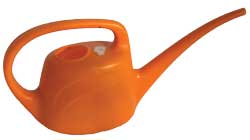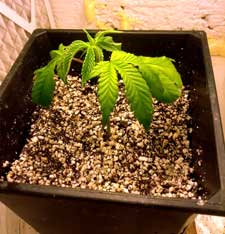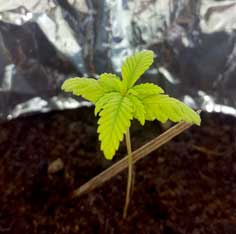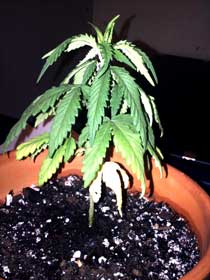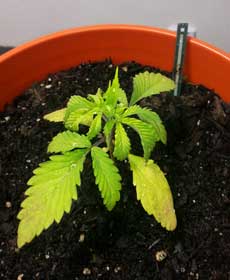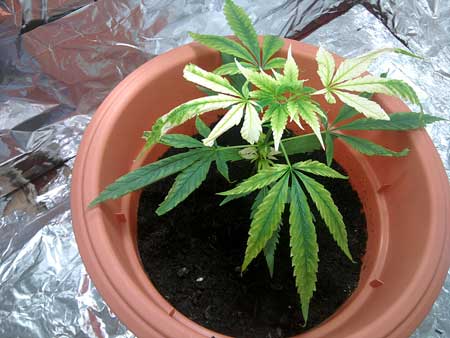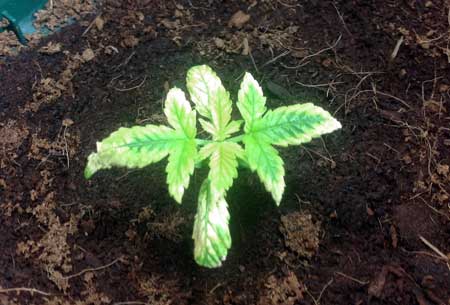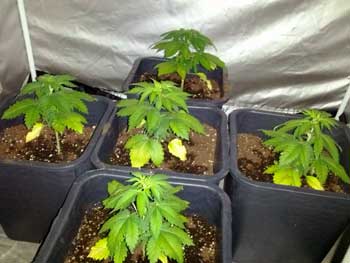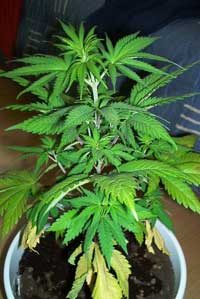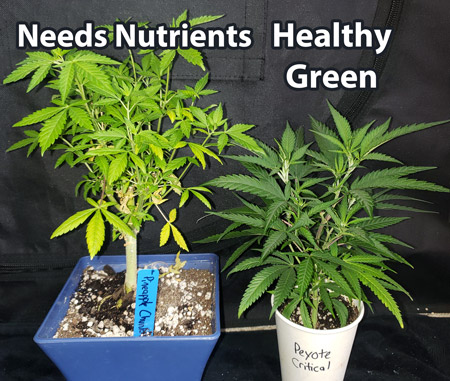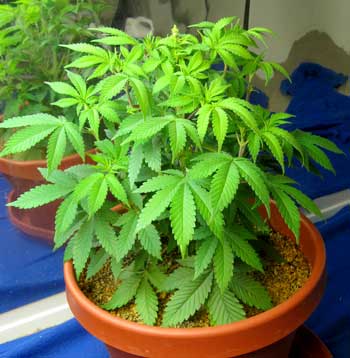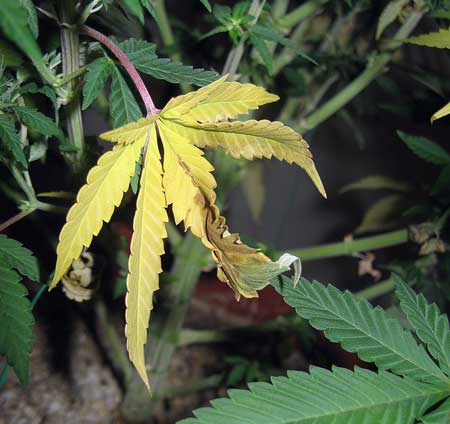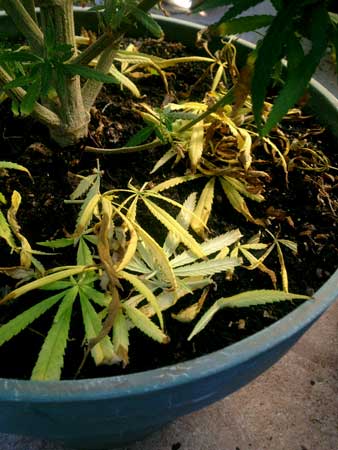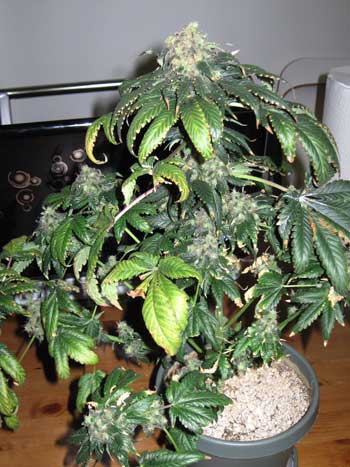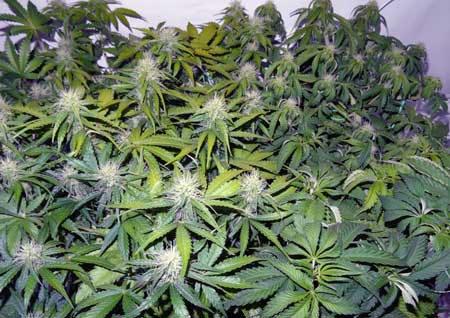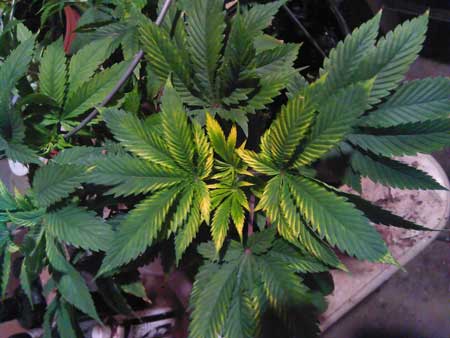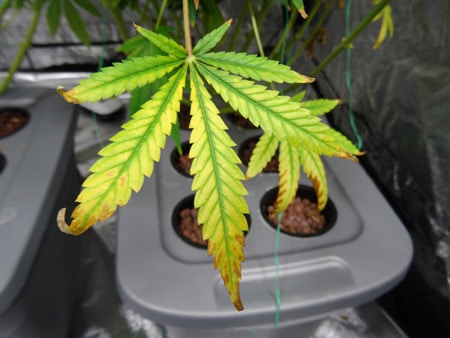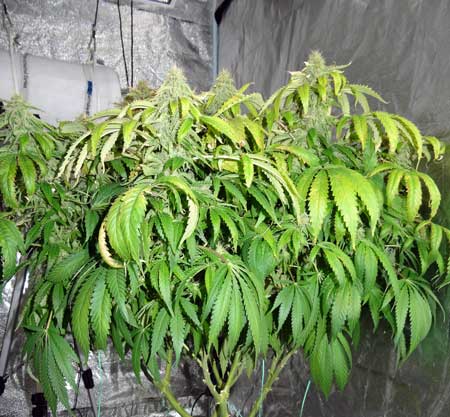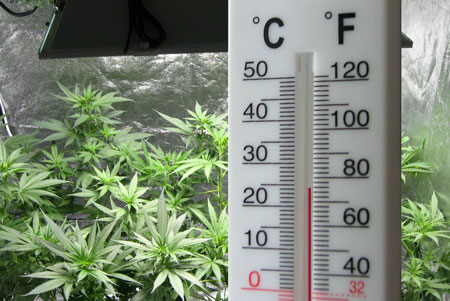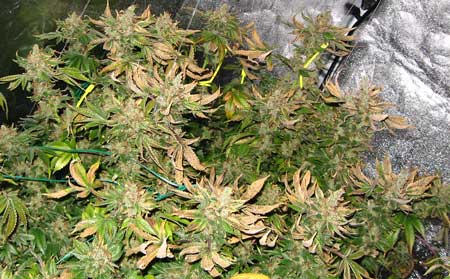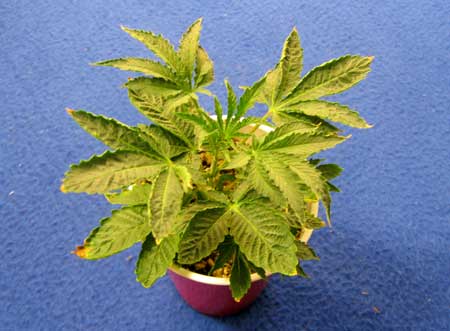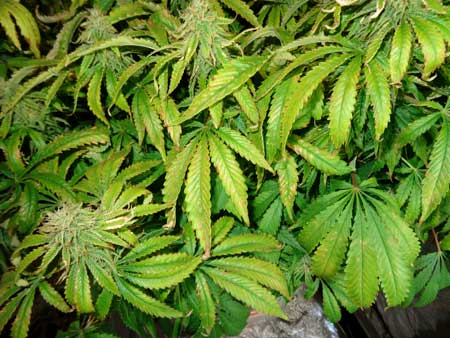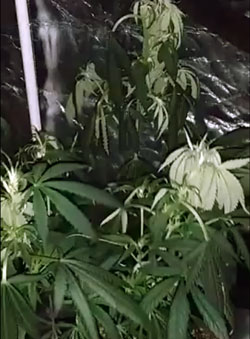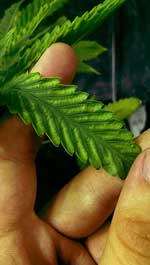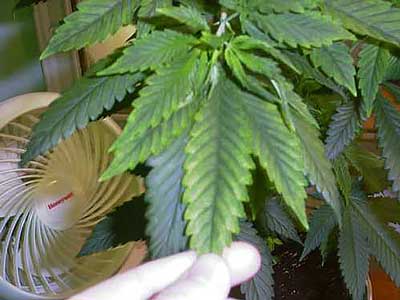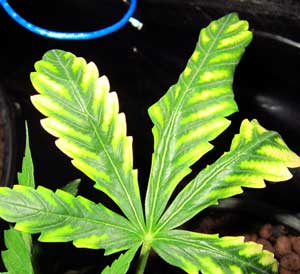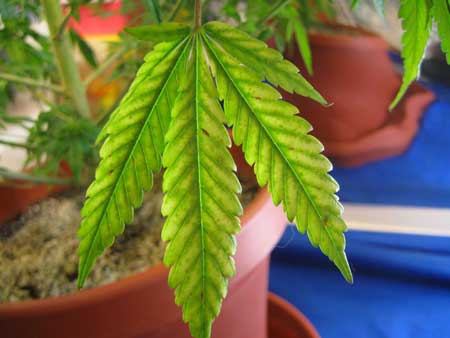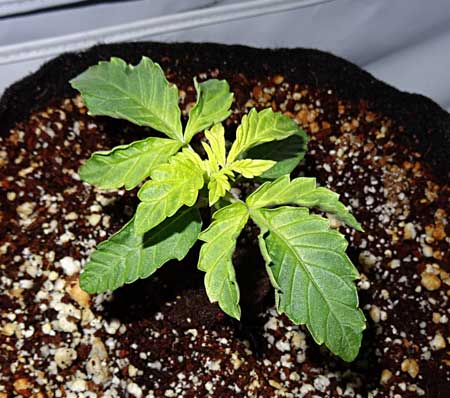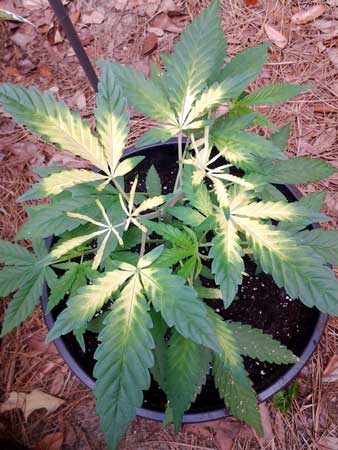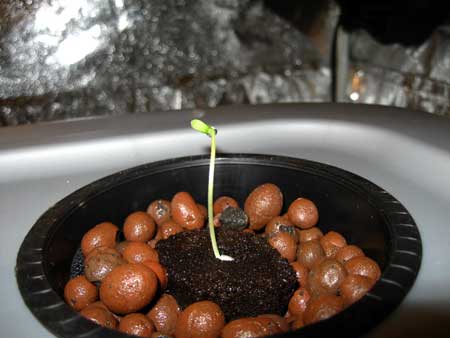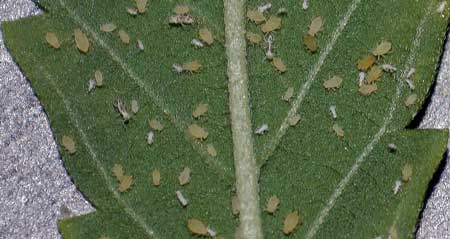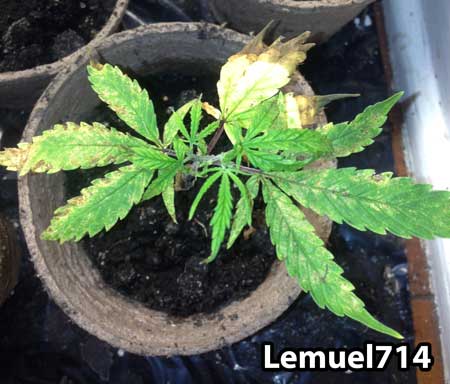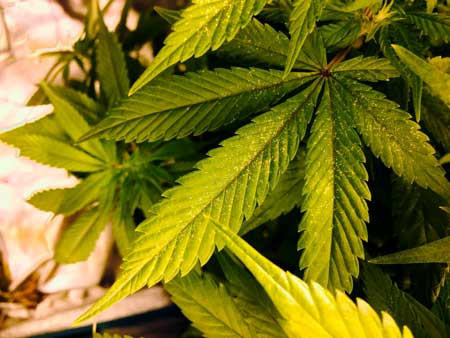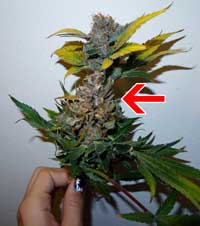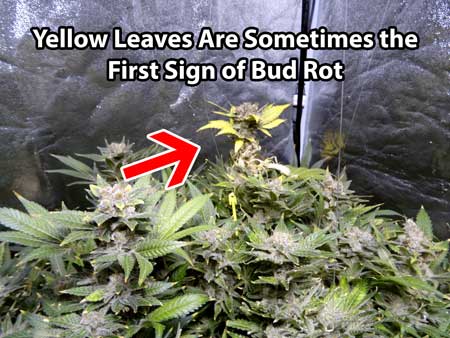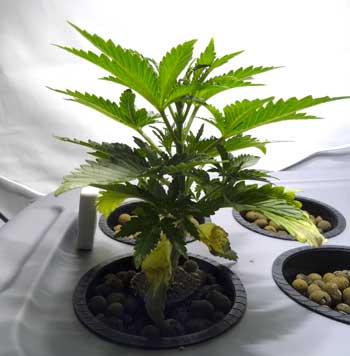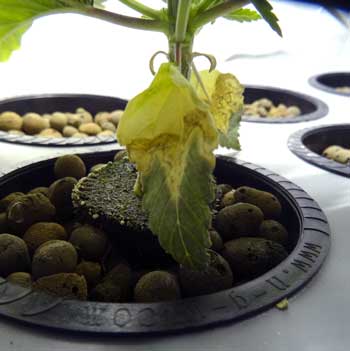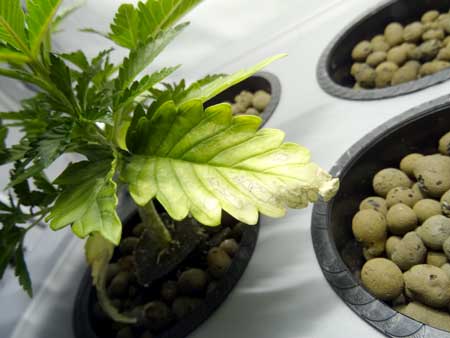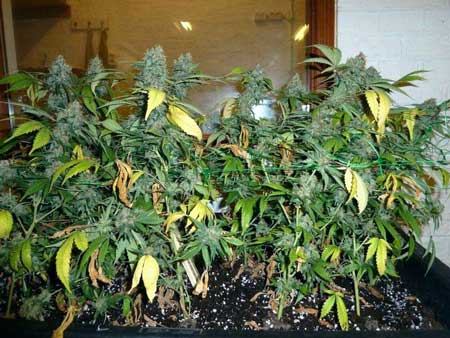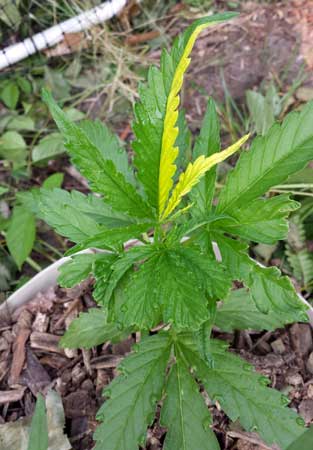by Nebula Haze
Are some or all of your cannabis leaves turning yellow? Maybe your leaves also have other symptoms like spots, curling, wilting, brown patches, etc. Marijuana plants may get yellowing leaves for several different reasons, so it can be hard to figure out the true root of the problem!
Today I’ll break down the 10 most common reasons your weed leaves turn yellow, and I’ll show you how to make your plant green again!
10 Most Common Reasons for Yellow Leaves
- Root pH
- Poor Watering Practices
- Nitrogen Deficiency
- Light Burn
- Heat Stress / Cold Shock
- Magnesium Deficiency
- Iron Deficiency
- Not Enough Light (Seedlings)
- Bugs or Pests
- Bud Rot
When Not to Worry (Pictures of Normal Yellow Leaves)
10 Causes of Yellow Leaves (From Most to Least Common)
1.) PH is Too High or Low at the Roots
Whether you’re growing in soil, coco coir or in hydroponics, probably the most common reason to see yellowing and other nutrient deficiencies is the pH near the roots is too high or too low. Cannabis plants have a difficult time absorbing nutrients when the pH is off, resulting in nutrient deficiencies even if the nutrients are actually present near the roots.
Symptoms
- Yellow or other oddly colored leaves
- Spots, stripes, or patches
- Burning around the edges of leaves
- In fact, almost any nutrient deficiency can be triggered by incorrect pH
How Do Growers Get It?
Growers who don’t make sure their pH stays in the right range will often run into nutrient deficiencies, even if they’re starting with a pure source of water and good soil!
- Soil Optimum: 6-7 pH
- Coco / Hydro Optimum: 5.5-6.5 pH
How to Fix
- Use a kit or PH Pen to test the pH of the water before you give it to your plants, and adjust if necessary by adding an acid or base to your water
- Learn How to Fix Incorrect pH
These symptoms look like nutrient deficiencies but are actually caused by incorrect pH!
Most water sources contain enough copper (which the plant needs in very small amounts) so copper deficiencies like this one are almost always caused by incorrect root pH
Zinc deficiencies are the same way. They are almost always caused by incorrect pH.
Another common culprit of yellow leaves from incorrect pH is a potassium deficiency. Cannabis plants love lots of potassium, especially in the flowering stage, but nearly all cannabis-friendly nutrient systems contain plenty of potassium. If you’re adding nutrients to the water, this deficiency is almost always the symptom of a pH problem.
This is also a potassium deficiency, even though it looks a little like nutrient burn (too high levels of nutrients). The main clue is the yellow striping on the leaves, which tends to get worse over time until leaves are mostly yellow. Another clue is the brown tips go in further than typical nutrient burn.
Stripes on the leaves (click for close-up) indicates that this is not a Nitrogen deficiency, even though the symptoms are similar. In this case, the symptoms were caused by the pH being way too high.
2.) Poor Watering Practices
It’s much more common to over-water than under-water cannabis plants, and the symptoms are very similar. In either case, the solution is to learn how to water your plants exactly the right amount at the right time!
Symptoms of Poor Watering Practices
Droopiness (it’s normal for plants to droop a little before the lights go out, but you know the drooping is a problem if it’s already happening at the beginning of their “day”).
- Odd problems and symptoms from poor water practices including yellowing and sometimes other deficiencies.
- Overwatering – leaves seem “fat” and swollen with water. Often you’ll have a feeling you may be overwatering your plant, especially if it’s a small plant in a large container.
- Underwatering – leaves often seem “papery” and thin because they don’t have any water inside them. Chronic underwatering leads to overall yellowing and deficiencies.
How Do Growers Get It?
- Overwatering is most common with young plants since they still have small, weak root systems
- You can hurt plants by giving too much or too little water at a time, and you can also cause persistent droopiness by watering too often or too infrequently
- Bad soil with poor drainage can cause the symptoms of overwatering even if you’re watering the plants perfectly!
- Small plants in big containers are easily over-watered
- Big plants in small containers are easily under-watered
- Growers who spend long periods away from their plants and/or don’t pay attention to their watering needs are much more likely to run into problems with droopiness!
How to Water Your Plants Correctly
- Start with good soil or coco coir
- Make sure plants are in the right size container for their size
- If plants start drooping after you water them, you’re overwatering!
- If drooping plants perk up after watering, you’re underwatering!
- Learn how to water your plants perfectly every time!
Overwatering
Chronic overwatering can sometimes cause unusual deficiencies even if the pH is spot on, like this plant grown in muddy soil. The biggest sign that these symptoms are caused by overwatering and not pH (or something else) is that the plant is always droopy.
Another example of a deficiency that’s actually caused by overwatering (notice how this seedling is also droopy)
Chronic Underwatering (Relatively Rare)
Most growers tend to overwater – not underwater – their plants. However, if you’re spending long periods away from your plants or the containers are drying up in less than a day or two, it may mean that your plant needs to be watered more often, or be given more water at a time. It’s also more common to under-water when plants start overgrowing their pots.
It can be difficult to diagnose chronic underwatering because problems may look like nutrient deficiencies. Your main clue is that plants perk up every time after you water.
Learn more about underwatering
3.) Nitrogen Deficiency
Symptoms
Plants tend to be lime green or pale all over, even though the leaves appear healthy without stripes or spots
- Yellow leaves tend to appear toward the bottom of the plant
- Yellow leaves feel soft and are easily pulled off (in fact they usually fall on their own). If a leaf feels very stiff or is hard to pull out, that means it is not a Nitrogen deficiency
How Do Growers Get It?
- Affects plants that have “used up” the nutrients in the soil, which can happen after the plant has been in the same container for several weeks or months.
- This can happen in coco or hydro when the grower isn’t providing any extra nutrients (since there is no Nitrogen contained naturally in plain coco or water).
- It is very unlikely you have a true Nitrogen deficiency if you’re providing your plants with the recommended amount of cannabis nutrients in the water.
How to Fix
- Easily remedied by giving plants a regular base plant nutrient from basically any cannabis-friendly nutrient system
- In soil, growers can transplant their plants to a new container with fresh soil (if they don’t want to add extra nutrients to the water).
- Learn more about Nitrogen deficiencies
A cannabis plant turns pale or lime green all over (left) when it needs more Nitrogen. A healthy plant appears medium green (right).
This plant is on the verge of a Nitrogen deficiency. This is indicated by its overall pale color, even though all the leaves look healthy without spots or stripes. Cannabis leaves should not be lime green or pale, or the plant tends to grow more slowly!
Here’s a close-up of a Nitrogen-deficient leaf near the bottom of the plant. Nitrogen-deficient leaves are soft and look/feel wilted.
If you have a Nitrogen deficiency, the yellow leaves will start falling off on their own
Did You Know? Oddly enough, too much Nitrogen can also cause yellow leaves, though the rest of the leaves will be clawed and a deep dark green instead of pale.
Too Much Nitrogen (Nitrogen Toxicity)
4.) Light Burn
Symptoms
- Yellowing appears most on the parts of the plant closest to the light.
- Yellow leaves do not pull out easily, even if the whole leaf is dead
- Light burn often takes a few weeks to develop and is most common once the plant is past the 6th week of the flowering stage (when plants aren’t making many new leaves to replace old ones).
Cannabis light burn usually affects the top leaves closest to the grow light instead of affecting the plant evenly
How Do Growers Get It?
- Light burn is when your leaves are working too hard for too long, causing them to die early.
- Even if the temperature is in a good range, your plant can still get light burn if the grow light is too close. It’s kind of like how skiers can get sunburned even in freezing temperatures because of all the sunlight reflecting off the snow.
- Light burn is most common with powerful lights like HPS/LED/LEC.
- It’s also common when switching to new bulbs (which are stronger than old bulbs) or when there is no glass between the bulb and your plants.
- Some plants are more sensitive than others, and you may have one plant suffering from light burn while the others are fine. That can make it harder to diagnose the problem since some of your plants are thriving in the same environment!
Light burn symptoms can be different from plant to plant, but they always seem to happen mostly to the parts of the plant that are closest to the light
How to Fix
- The best way to fix light burn is to move your grow lights further away, or bend over the affected plants so they’re further from the light.
- When in doubt, always follow the manufacturer’s recommendations when it comes to how far away to keep your light from your plants! This is especially important for growers who utilize LEDs.
5.) Temperature Problems (Heat Stress / Cold Shock)
- Yellow or burnt leaves near the light
- General yellowing of upper leaves
- Leaves start “turning up” at the edges, or forming “tacos”
How Do Growers Get It?
- If you put your hand where your plants are and hold it there for 30 seconds, is it too hot to be comfortable? If it’s too hot for you it’s likely too hot for your plants.
- Although relatively rare indoors since most growers struggle with heat instead of cold, a temperature under 50°F (10°C) can also cause pale or yellow leaves. Some plants will even die if it hits freezing temperatures! Placing grow containers directly on concrete in a basement can kill them with cold overnight!
How to Fix
- You should be able to pass the “hand test” (hold your hand where your plants are and make sure it’s not too hot). If it’s too hot for you, move the light up and further away from the top of your plants.
- You should correct the temperature if it’s under 60°F at night or above 85°F during the day.
- Make sure there is good air circulation in the grow space, to prevent hot spots.
- Your plants will be more resistant to cold if you keep their roots warm, so make sure to keep your containers off the cold floor (or if outdoors, you might consider covering your plant roots at night!)!
This poor plant was decimated by a heat wave – it went through several days of 100°F+ temperatures! Luckily the buds were still great 🙂
Too much heat can cause the edges of leaves to curl upwards and make “tacos”.
Sometimes extended periods of high temperatures cause spots and other odd symptoms in addition to yellowing.
Cold Shock
This plant was exposed to temperatures under 40°F (5°C) at night, causing all the newest growth to turn so pale yellow it almost looked white!
6.) Magnesium Deficiency
Symptoms
- Yellowing in between the veins on leaves, often located lower down on the plant.
How Do Growers Get It?
- A magnesium deficiency is almost always caused by incorrect pH though if you’re using heavily purified or soft water (such as RO – reverse osmosis – water) you may need a Cal-Mag supplement to make sure your plant is getting enough magnesium.
How to Fix
- First, check the pH. It should be in the 6.0-7.0 range for soil growers and 5.5-6.5 for everyone else.
- If a Magnesium deficiency persists, consider getting a CaliMagic supplement that is made for plants (you should always add Magnesium and Calcium at the same time because these two nutrients work together in the cannabis plant).
- Learn more about Magnesium deficiencies
With a magnesium deficiency, the yellowing happens between the veins of the leaves, while the veins stay green.
Sometimes Triggered by Old Age / Natural Senescence / Light Deprivation
- It’s actually normal if you only see these symptoms on a few leaves at the bottom of the plant that are no longer getting any light. The plant eventually “gives up” on old leaves if they spend days or weeks without light, which often happens to the lowest leaves as the plant gets bigger. This may look like a magnesium deficiency.
- If this is the case, the leaves often seem droopy, limp, and tired. These leaves don’t “stick straight out” like normal leaves because the plant isn’t wasting resources by putting energy into them.
- This is most common when using relatively weak grow lights like fluorescent lighting or CFLs, since the light doesn’t easily reach the bottom of the plant.
- Therefore this symptom is only something to worry about if it’s happening on leaves that are still getting light, or if you’re seeing the symptoms on many different leaves instead of just an occasional leaf here and there.
7.) Iron Deficiency
Symptoms
- Iron deficiencies are unique because the yellowing always affects the newest growth; it does not happen to older leaves that are already green.
- New leaves usually come in completely yellow.
- Unlike most other nutrient deficiencies that cause yellowing, yellow leaves from an iron deficiency will usually turn green, starting from the outside edges and working inwards.
How Do Growers Get It?
- Unless you are using RO or very purified water, an iron deficiency is almost always caused by incorrect pH. This is because cannabis needs very little iron, and most sources of water already contain trace amounts of iron.
How to Fix
- The pH being too high or too low is the most likely cause of this problem. Bring your pH into the correct range and iron deficiencies will just go away.
- If using purified water or water that doesn’t contain much natural iron, you may need a Cal-Mag supplement that includes iron like CaliMagic. You see these three together because Iron, Calcium, and Magnesium work closely together in the plant. You never want to supplement your plant with extra iron without also adding the correct ratio of Calcium and Magnesium at the same time, or it may cause other types of deficiencies.
- Learn more about Iron deficiencies
Iron deficiencies cause the middle and newest leaves to turn yellow, but they will slowly turn green as the plant gets older
8.) Not Enough Light (Seedlings)
When a shell first cracks, the round leaves inside are actually yellow. They only turn green once the plant starts getting enough light.
Note: Adult cannabis plants without enough light won’t grow well either, but they likely won’t have yellow leaves. In fact, adult cannabis plants that are getting relatively low levels of light will actually turn dark green since they aren’t using up nutrients for photosynthesis (the extra unused nutrients get stored in the leaves, causing them to appear darker).
How Do Growers Get It?
You know your seedling needs more light when…
- Seedlings are tall with small leaves
- There is a lot of nodal spacing (stem between each set of leaves). Seedlings look “stretchy”.
- Leaves stay yellow or pale green
How to Fix
- The solution for pale, tall, stretchy seedlings is to add more light!
- Learn more about different grow lights as well as how to upgrade your light system
This seedling is yellow and “stretching” because it needs more light
9.) Bugs or Pests
Many different types of bugs or pests can stress your plants, causing them to develop yellow leaves.
Symptoms
- You can actually see bugs or eggs
- Yellowing leaves, especially when combined with spots or bite marks
- Overall lack of vigor
How Do Growers Get Pests?
- Track them in from outside
- From visiting another grower’s plants
- Getting an infected clone or plant (sometimes there are a few tiny eggs you can’t see!)
- Certain things like overwatering, lack of cleanliness, and poor air circulation make your garden a bigger target and a better home for bugs, making it easier for an infestation to take hold and stick around.
How to Fix
- Unless you 100% trust the grower and their growing practices, never ever visit another grower’s garden or adopt clones from them. It can be incredibly difficult to get rid of bugs that are already specialized at surviving on cannabis plants!
- Avoid going straight from outside to your cannabis plants, especially if you’ve spent time in a garden.
- Make sure there is a screen to stop bugs if your plants are getting fresh air from outside.
- Identify your bugs and get rid of them!
One of the most common pests that can cause yellowing without really any other symptoms is fungus gnats. These tiny winged creatures hang around your wet topsoil, and are most likely to appear if you’re overwatering your plants. Although the adults don’t attack your plants, their larvae feast on the roots, which can eventually cause yellowing, especially on small or weak plants.
A bad fungus gnat infestation can damage or even kill your plant!
Another common pest that may cause overall leaf yellowing is spider mites!
But any time a plant has an infestation, you may notice the leaves start yellowing regardless of the type of bug. You should be very concerned if you also see spots!
Click here to find out which bugs are attacking your cannabis plants!
10.) Bud Rot
If yellow leaves appear overnight on just one or a few of your main buds, inspect the areas closely! Sometimes this is caused by bud rot at the base of the leaves.
Symptoms
- Yellow leaves on select parts of the biggest buds
- Yellowing often appears overnight
- Yellow leaves usually easily fall right out
- At the base of the leaf, you can see white, gray, or brown mold growing on the inside of the cola
How Do Growers Get It?
- Humidity above 60% RH
- Lack of air circulation/breeze
- Cool temperature – bud rot thrives around 60-70°F
- Bushy plant (too many leaves) in a small space like a grow tent
- Outdoors in rainy, cool, or humid weather
How to Fix
- Keep humidity under 50% RH during flowering if possible
- Keep the temperature above 65-70°F at night if possible
- Make sure there’s lots of air circulation around all the colas and through the plant
- Defoliate a very bushy plant, especially if it’s getting close to harvest time
- Learn how to prevent and treat bud rot!
Sometimes Yellow Leaves Are Normal!
Sometimes marijuana leaves turn yellow for totally normal reasons, including…
First Leaves Turn Yellow – Normal
After your plant has grown a few sets of leaves, it’s very normal for the first few sets of leaves to turn yellow and die, especially if they’re not getting light anymore. You will almost always lose the round cotyledons, the single-finger leaves, and the three-finger leaves (the first three sets of leaves).
This vibrant young cannabis plant is healthy and growing over an inch a day
However, if you look closely at the bottom of the plant, you can see the three bottom sets of leaves have turned yellow and are dying. This is normal. The plant does not hold onto these baby leaves for long!
Single-Finger Leaves (plus the tiny round cotyledon leaves)
Three-finger leaves
When just the first 3 sets of leaves turn yellow like the example above (leaves with three fingers or less), it’s not something to worry about as long as the rest of the plant is green, healthy, and growing fast.
You don’t normally see these in pictures because most growers remove them 🙂
The Plant is Ready to Harvest – Normal
Often plants will have a few yellow leaves by harvest time. This is completely normal and nothing to worry about as long as you’ve ruled out bud rot and most leaves seem healthy.
Mutation – Cosmetic (Usually Not Harmful)
Occasionally you may see mutations or natural variation that results in parts of leaves being yellow. The general rule of thumb with any unusual leaf symptom is if the rest of the plant is green, vibrant and healthy, there’s usually nothing to worry about.
See more common cannabis mutations
Don’t See Your Plant Problem Here?
Check Out the 7-Step Guide to Fixing 99% of Plant Problems!
Jump to…
7 Step Fix to 99% of Cannabis Growing Problems
Pictures of Cannabis Plant Problems
What does pH have to do with nutrient deficiencies?
10-Step Quick Start Guide to Growing

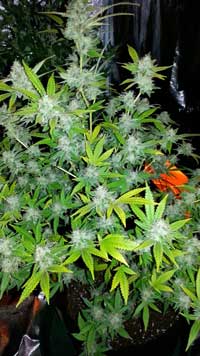
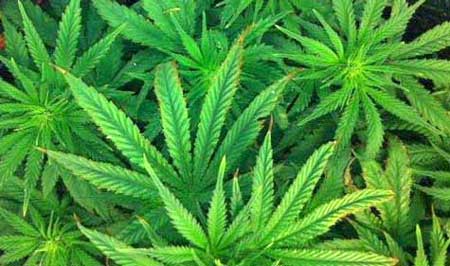
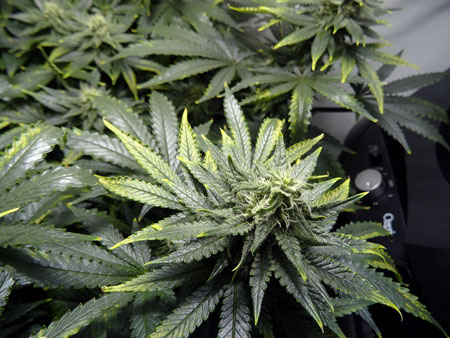
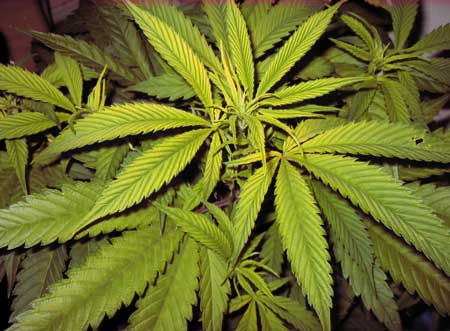
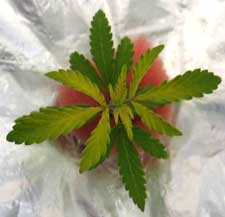
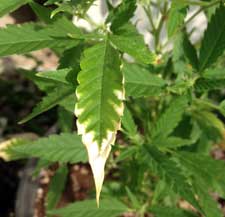
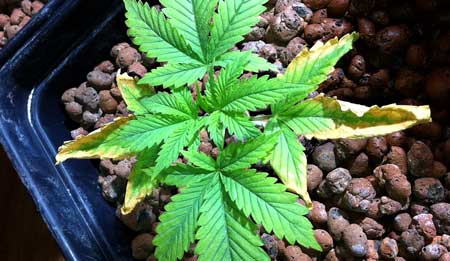
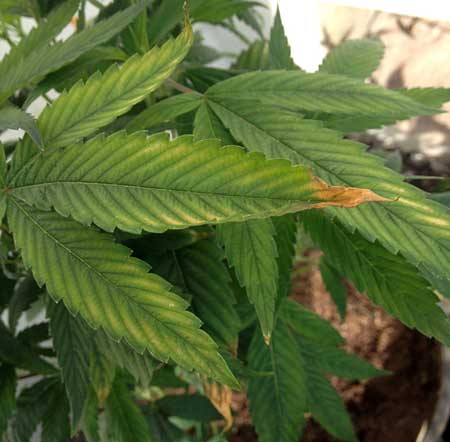
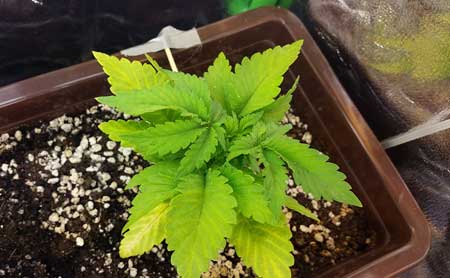
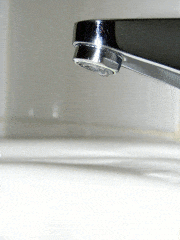 Droopiness (it’s normal for plants to droop a little before the lights go out, but you know the drooping is a problem if it’s already happening at the beginning of their “day”).
Droopiness (it’s normal for plants to droop a little before the lights go out, but you know the drooping is a problem if it’s already happening at the beginning of their “day”).